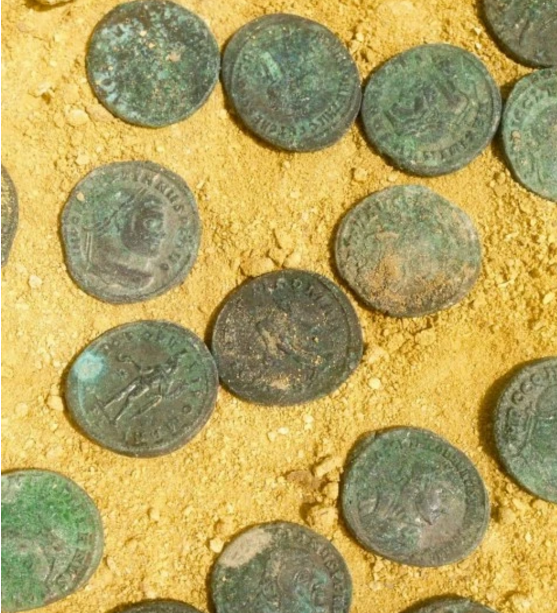Construction workers in Spain unearth 1,300 pound trove of ancient Roman
'I could not give you an economic value, because the value they really have is historical and you can’t calculate that'

Your support helps us to tell the story
From reproductive rights to climate change to Big Tech, The Independent is on the ground when the story is developing. Whether it's investigating the financials of Elon Musk's pro-Trump PAC or producing our latest documentary, 'The A Word', which shines a light on the American women fighting for reproductive rights, we know how important it is to parse out the facts from the messaging.
At such a critical moment in US history, we need reporters on the ground. Your donation allows us to keep sending journalists to speak to both sides of the story.
The Independent is trusted by Americans across the entire political spectrum. And unlike many other quality news outlets, we choose not to lock Americans out of our reporting and analysis with paywalls. We believe quality journalism should be available to everyone, paid for by those who can afford it.
Your support makes all the difference.Some 1,300 pounds of bronze Roman coins dating to the 3rd and 4th centuries have been unearthed by construction workers digging ditches in Spain.
The find, in 19 amphoras — storage containers — is unique not only because of the volume of coins but because the coins appear to have never been in circulation, making them almost pristine by comparison with other discoveries.
Workers in the city of Tomares, in Andalusia, were working on installing a water line to a park in the city of 24,000, according to the Spanish newspaper El País, when they noticed irregular terrain inside a ditch about a meter below ground level.
Some of the containers were broken, with the coins spilling out of them, while others were intact. They show an emperor, Maximian or Constantine on one side and Roman allegories on the other, researchers told reporters. Experts are speculating that the coins were meant to pay taxes or support legions of the Roman armies in Spain at the time.
“We have a team looking into the discovery right now. We believe it is hugely important and will have more information very soon,” a spokesman at Andalusia’s Ministry of Culture in Seville told The Local on Thursday.
Ana Navarro, head of Seville’s Archeology Museum, offered no precise estimate for the value of the haul, saying only that the coins were worth “certainly several million euros.”
This photo made available by the City Council of Tomares on Friday, April 29, 2016, shows some of the bronze and silver-coated coins dating from the end of the 4th century.
“The majority were newly minted and some of them probably were bathed in silver, not just bronze,” Navarro told reporters.
“I could not give you an economic value, because the value they really have is historical and you can’t calculate that.”
The Romans invaded the Iberian Peninsula in 206 B.C. and stayed for about 700 years, turning Andalusia into one of the empire’s richest colonies.
Copyright Washington Post
Join our commenting forum
Join thought-provoking conversations, follow other Independent readers and see their replies
Comments